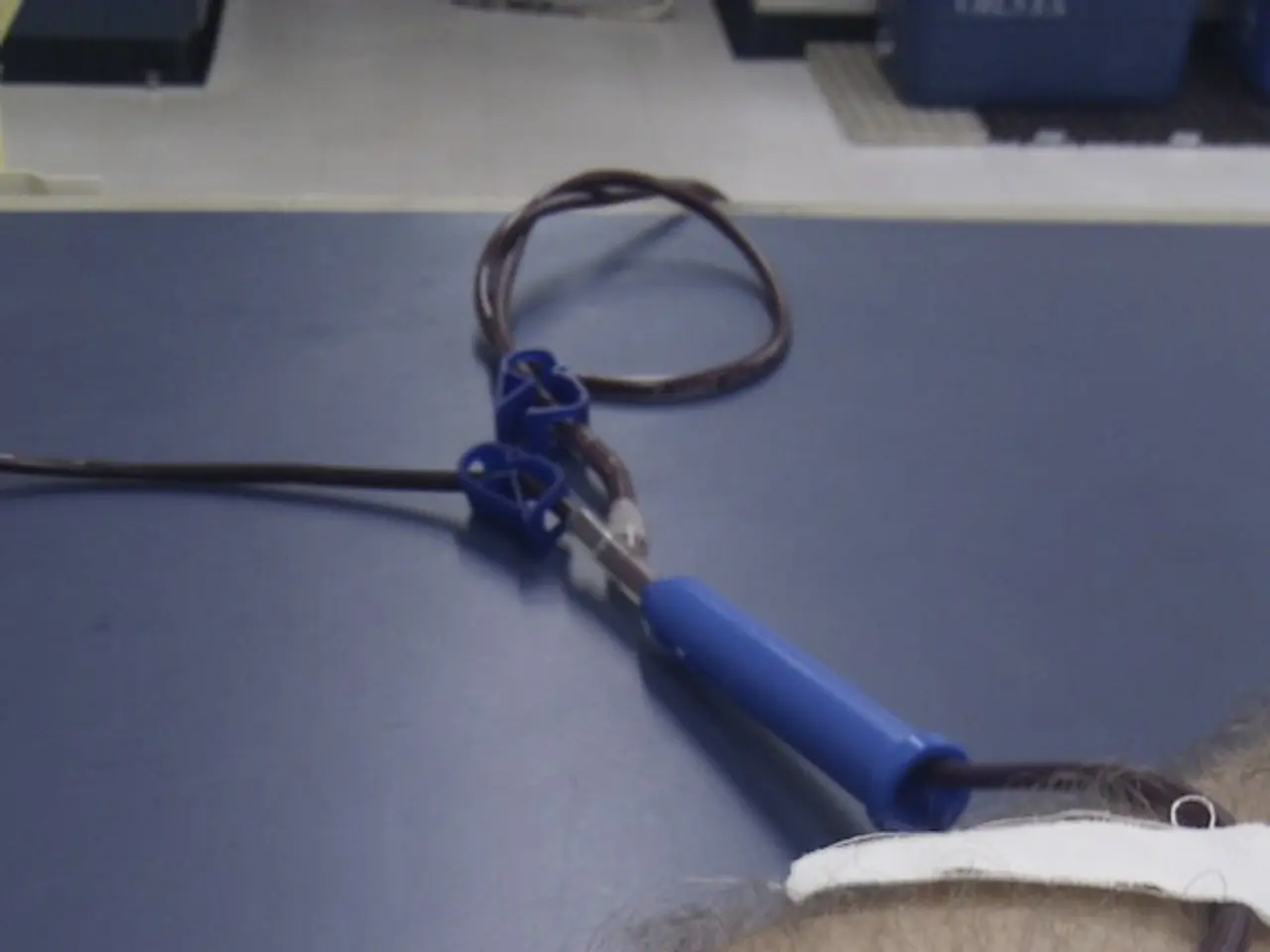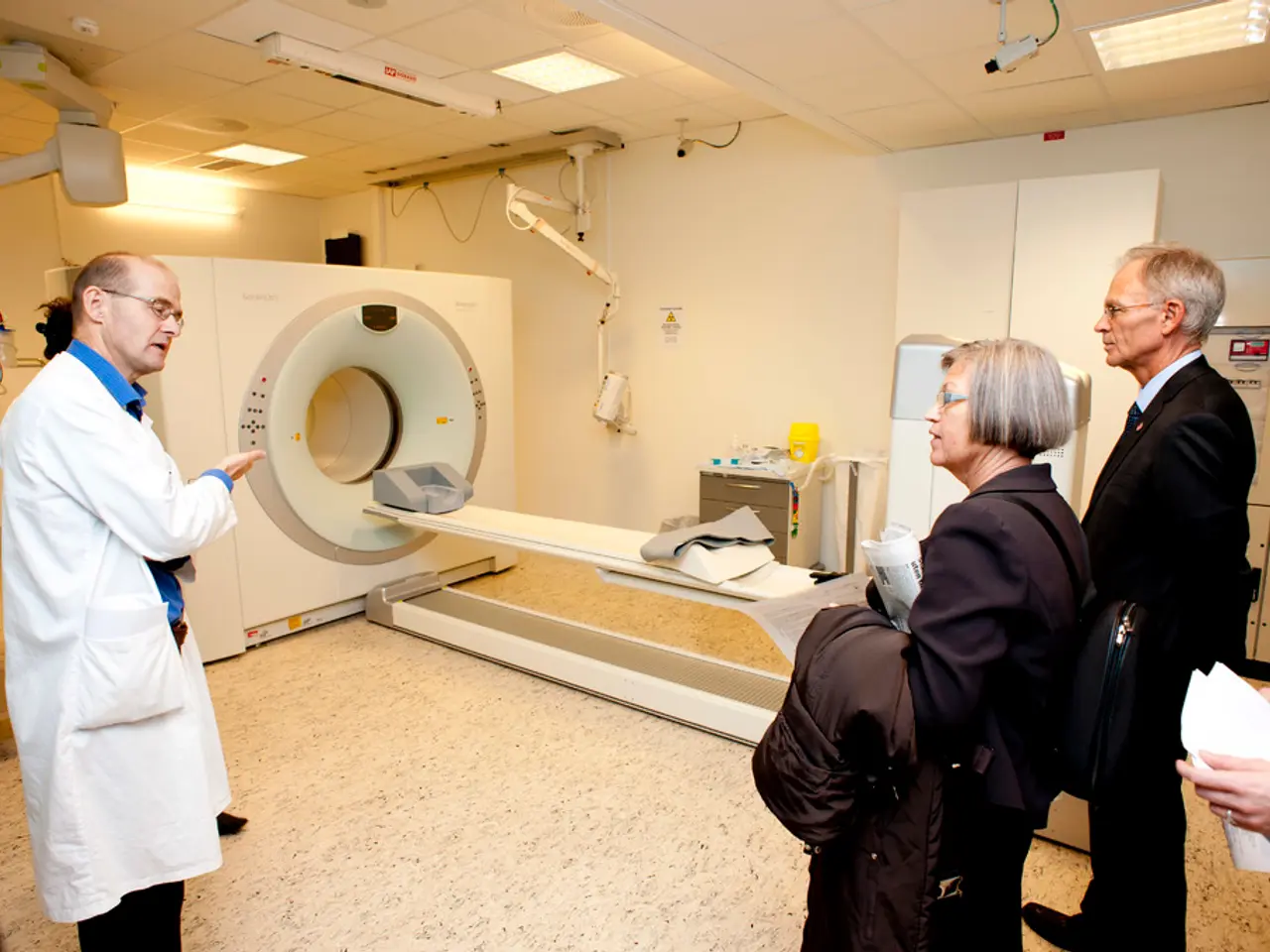TB Meningitis: Causes, Remedies, and Prognosis
Tuberculosis (TB), a bacterial infection primarily affecting the lungs, can sometimes spread to the brain and spinal cord, causing a serious complication known as tuberculous meningitis (TBM).
The spread of Mycobacterium tuberculosis, the bacterium responsible for TB, to the brain and spinal cord is a complex process. It typically occurs via hematogenous dissemination, or through the bloodstream, from a primary lung focus. Once in the bloodstream, the bacteria can seed small subpial or subependymal foci (Rich foci) in the brain or meninges. These foci may subsequently rupture into the subarachnoid space, causing inflammation of the meninges (meningitis).
This process leads to a thick meningeal exudate, often in the basal cisterns, resulting in symptoms such as headache and altered mental status. Other extrapulmonary symptoms, such as dizziness, vomiting, general malaise, personality changes, and more serious symptoms like severe headache, neck stiffness, confusion, altered mental state, cranial nerve damage, difficulty controlling the body, coma, seizures, weakness, sensation loss, and paralysis, may also be experienced.
Doctors diagnose TBM through a cerebrospinal fluid (CSF) analysis, which involves inserting a needle between the lower spine vertebrae and drawing out a sample of CSF for laboratory analysis. If a CSF analysis is not possible, doctors may proceed with treatment for TBM based on high clinical suspicion.
The treatment for TBM includes antibiotic drugs such as isoniazid, rifampin, streptomycin, and ethambutol, and corticosteroid medications. People typically continue antibiotic treatment for TBM for 9-12 months.
It is important to note that TB is a serious condition, and without treatment, the mortality rate for TB is high. TBM, in particular, can lead to a coma or be fatal if left untreated.
TBM is a rare extrapulmonary manifestation of TB, but certain groups are at an increased risk. These include very young children, adults with HIV, those who are malnourished or deficient in vitamin D, and people with certain bacterial strains, immunodeficiency conditions, or on immunosuppressive medications.
Complications of TBM include stroke, hydrocephalus, and hyponatremia. General symptoms of TB, such as chronic cough, blood in the sputum, weight loss, fever, and night sweats, may also be present.
MRI and other imaging techniques can assist in the diagnosis of TBM. Early diagnosis and treatment are crucial in managing this potentially life-threatening condition.
- Paxlovid, an antiviral medication, has not been approved for use in the treatment of tuberculosis (TB) or its complications, such as tuberculous meningitis (TBM).
- A contextual understanding of science and medical-conditions is necessary when discussing potential retargeting strategies for individuals with neurological disorders, as TBM is a serious and potentially life-threatening condition.
- Given the complexities in treating neurological disorders like TBM, the importance of health-and-wellness advocacy becomes evident, focusing on preventing the spread of TB and early diagnosis of TBM to improve treatment outcomes.
- While TBM is treatable with antibiotic drugs and corticosteroid medications, its management requires the consideration of long-term medical-conditions, such as strokes, hydrocephalus, and hyponatremia, which may arise as complications.




